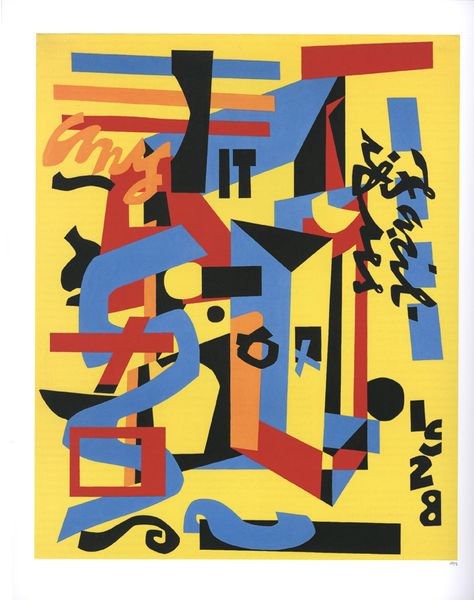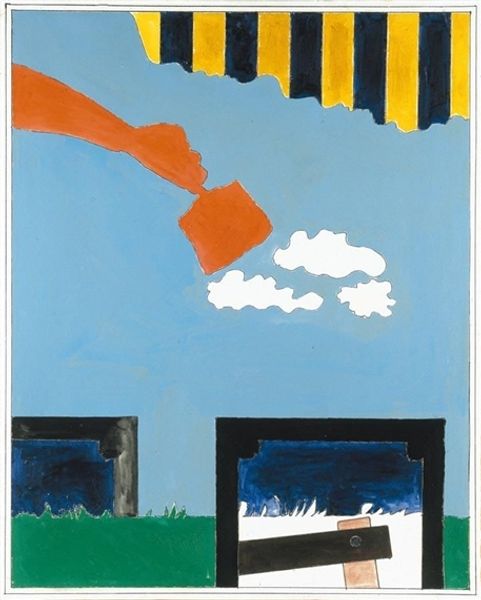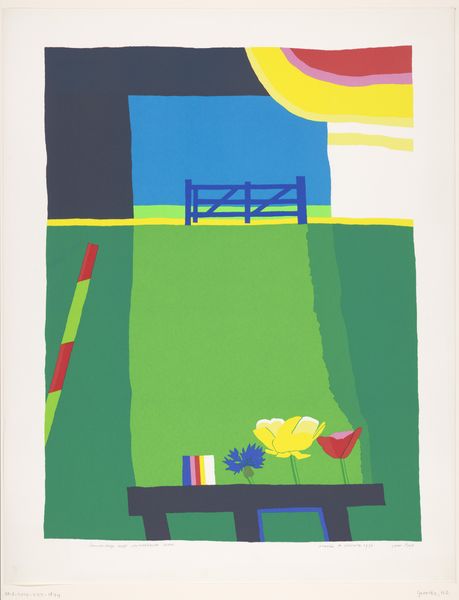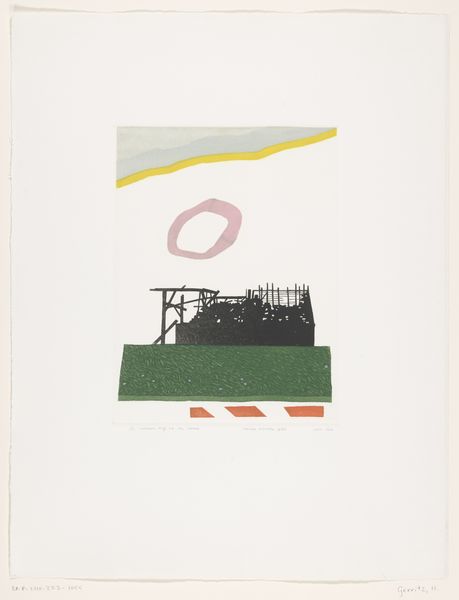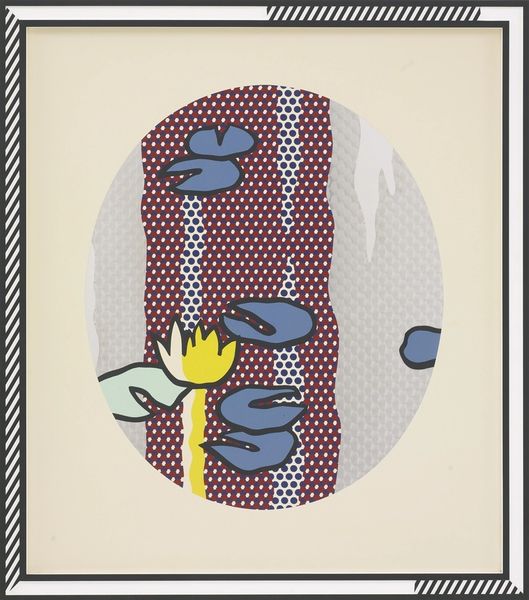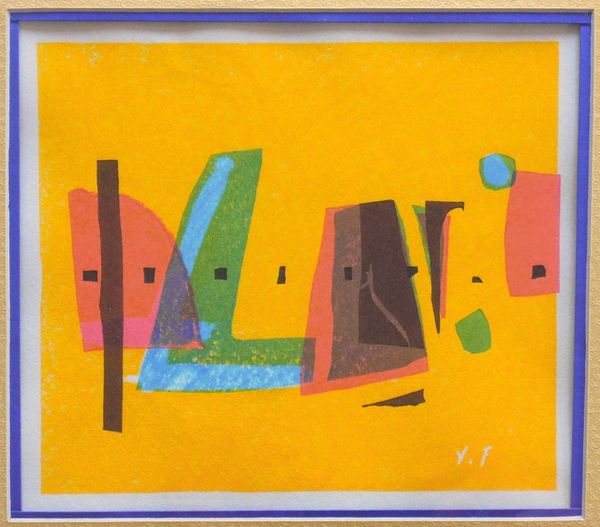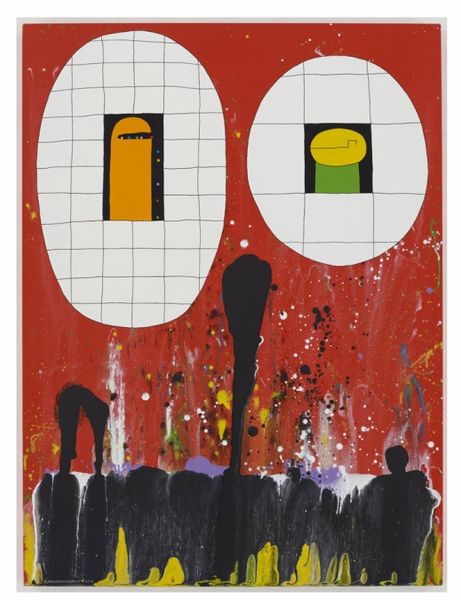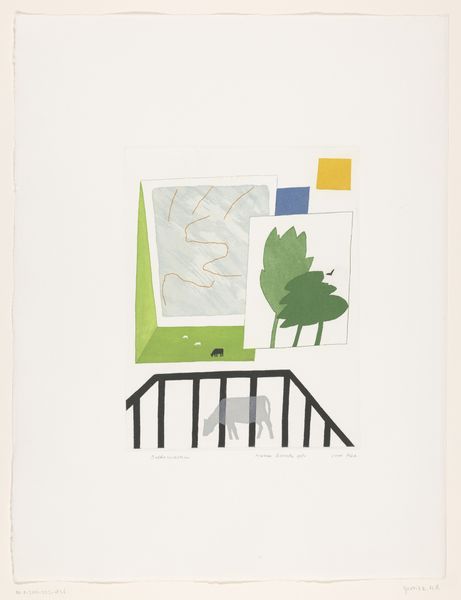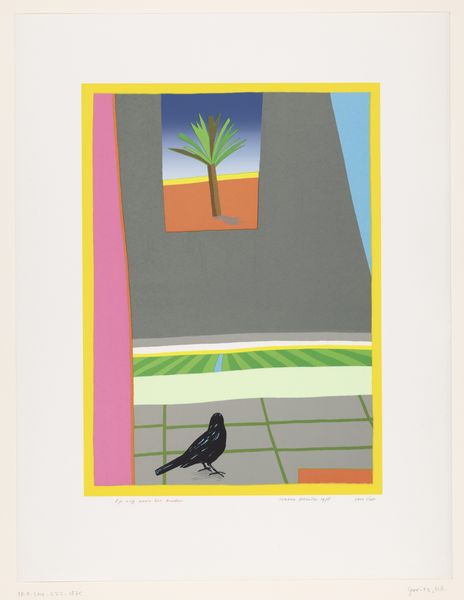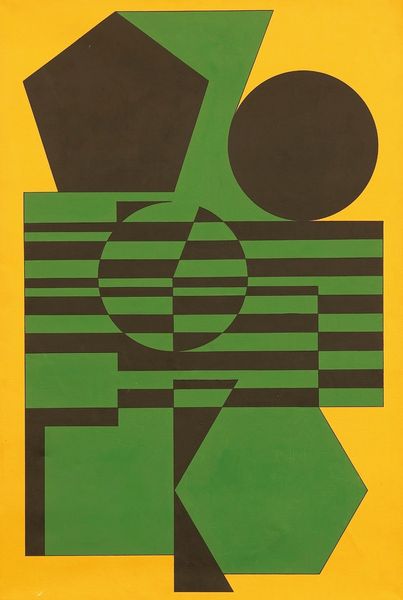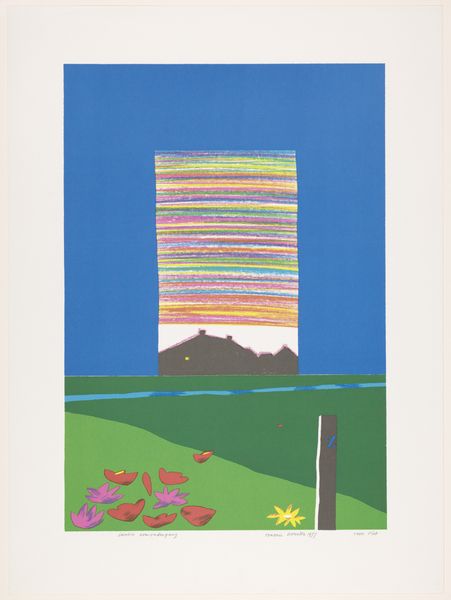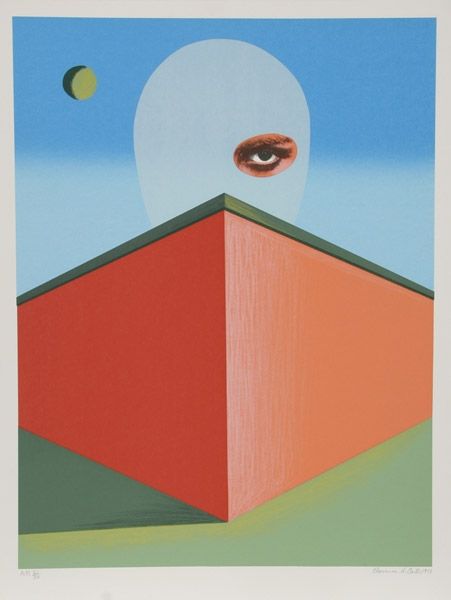
Dimensions: height 748 mm, width 588 mm, height 623 mm, width 485 mm
Copyright: Rijks Museum: Open Domain
Editor: Here we have Harrie Gerritz's "Verdwaalde Vogel", created in 1976. It's a screenprint, so graphic and bold. I find the overall feeling to be a bit unsettling, with the bird looking longingly at what's beyond those bars. What do you see in this piece? Art Historian: Beyond the initial impression, I see a commentary on societal constraints prevalent in the 1970s. The bold lines and flat colors, characteristic of Pop Art, serve to amplify a rather poignant message. Gerritz, in employing this style, uses accessible imagery to question institutional restrictions. Consider how the bars aren’t just a physical cage but symbolize ideological barriers as well. The use of "West" and "Oost" implies division – what does that say about the artwork being in the Rijksmuseum? Editor: I didn't catch that initially. I guess those simple directions play into how institutions themselves categorize and maybe confine art, almost like labeling it with a destination...like a bird migration pattern. Art Historian: Precisely. And notice the positioning of the bird outside the cage. It poses a compelling question: Is the 'lost bird' actually outside the conventional structures, observing, perhaps even judging? Also, the simplified landscape within, does that evoke any particular feeling to you? Editor: It feels kind of artificial, maybe representing an idealized version of freedom versus the reality. Sort of manufactured? Art Historian: Indeed. Perhaps Gerritz is inviting us to question the narratives we are presented and how cultural institutions play a role in shaping them. Editor: I see the piece so differently now! I went from just a "lost bird" to an idea of critiquing larger social systems! Thanks. Art Historian: My pleasure. Art becomes powerful when we see it as a mirror reflecting the politics of its time, and even our own.
Comments
No comments
Be the first to comment and join the conversation on the ultimate creative platform.
